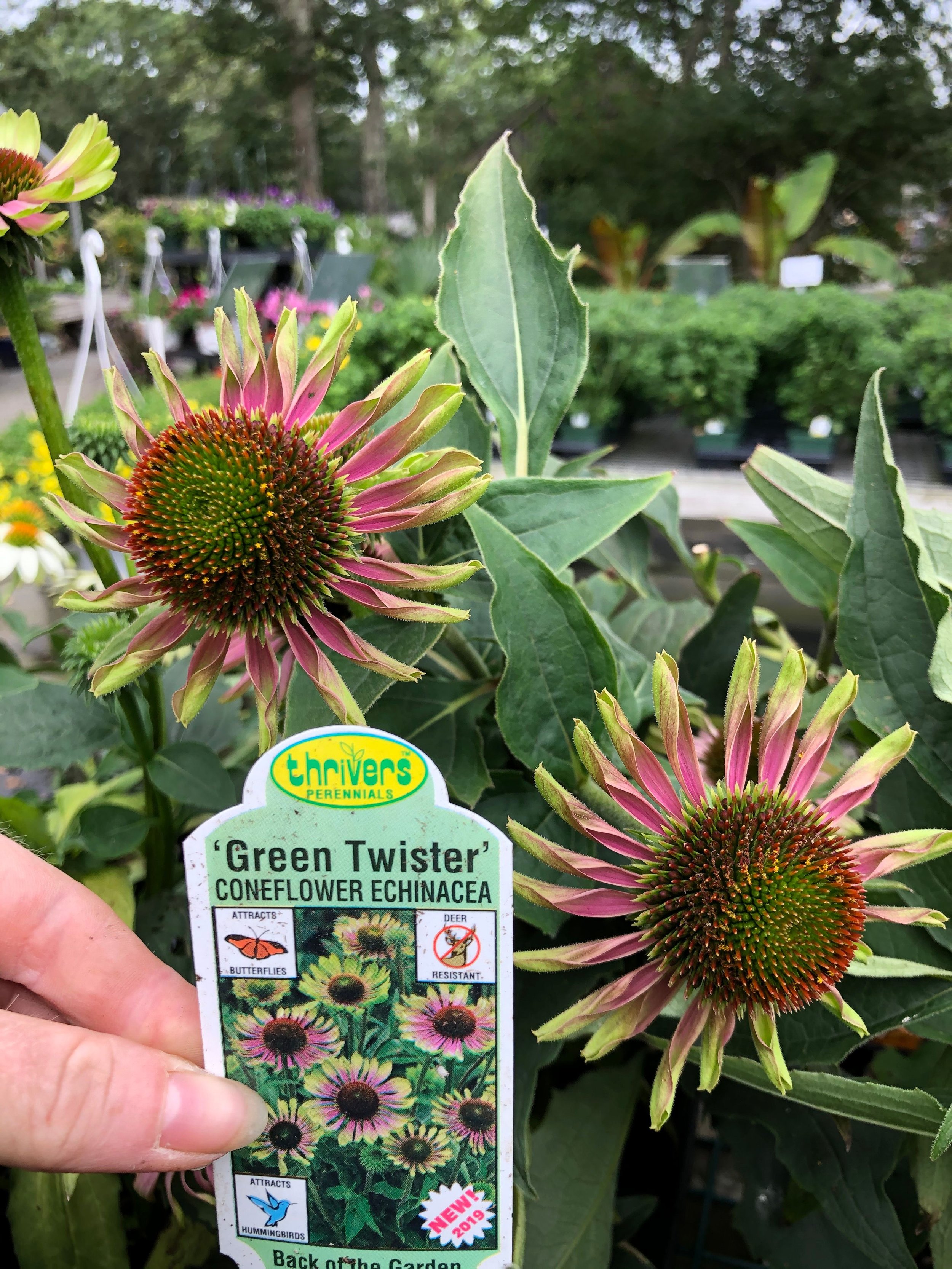ECHINACEA 30% OFF
CONEFLOWER
Echinacea comes from the Greek word echinos meaning hedgehog or sea-urchin in reference to the spiny central cone.
Natives Vs Hybrids
We grow several species of Echinacea, such as Echinacea purpurea, Echinacea pallida and Echinacea paradoxa. Starting plants from seed adds new DNA combinations to the species and the population. This is thought to increase chances of populations being able to adapt and fight off disease. Thus the hybrids may not be as adaptable. The native cone flowers exist in pink and yellow.
We sell countless hybrids that the horticultural industry has created from mostly Echinacea purpurea. It can take several years for a hybrid to be stable enough to be sold in the market. It is possible that some of the hybrids, which are mostly asexually propagated by cuttings or tissue culture, may not be as adaptable or hardy as the species but boy are they beautiful. The hybrids now exist in all sizes and colors including orange, red, pink, yellow or even bicolor. We carry the Sombrero series, like Salsa Red and Adobe Orange which are two of our favorites. We love many of the Echinacea hybrids like Green twister and White Swan.
*If food for pollinators is your #1 reason for planting Echinacea, either plant the native species or pick the single hybrids. The doubles are not believed to be good food for pollinators. Many of the doubles are sterile and produce no seed.
Coneflowers come in a rainbow of colors!
****************
ECHINACEA AVAILABLE AT VINEYARD GARDENS
***************
SOMBRERO SERIES
(Continues to be one
of our favorites!)
Salsa Red
Adobe Orange
Hot Coral
Lemon Yellow
Rosada
Summer Solstice
Tres Amigos
Sangrita
***************
***************
SUNSEEKER SERIES
(Tall with beautiful flowers that
often transition to other colors as
they mature. Some can be
double.)
Rainbow
Salmon
Perfection
***************
***************
Green Wizard
(The flower petals are
yellow-green
on the tips and
bleed into a pale
pink closer to
the cone.)
***************
Old Fashioned Hybrid
Ruby Giant
(Quite tall with
large pink flowers)
***************
***************
Ruby Giant
Green Twister
(Very hardy)
***************
New this year!
We are testing for hardiness.
Dark Shadows Wicked
Orange You Awesome
The Fuschia is Bright
One in a Melon
Summer Song
Fire Finch
Baja Burgundy
***************
USES
Attracts all types of butterflies, birds, bees and other pollinators!
Let the later blooms stand throughout winter, where the characteristic central cone swollen and full of seed offers an excellent food source for birds. Once spring arrives, simply cut back your coneflowers to the ground.
Medicinal use: to help boost the immune system and shorten the duration of the common cold and flu. Echinacea flowers are often associated with health and healing.
GROWING CONDITIONS
Herbaceous perennial that is native to the mid west prairies of the US.
An adaptable plant that is tolerant of drought, heat, humidity and poor soil.
Easily grown in average, dry to medium, well-drained soil in full sun.
Coneflowers are not fussy. They aren’t particularly bothered by pests and do not require fertilizer.
Mid-summer bloom
Echinacea Sombrero Salsa & Sangrita
















































